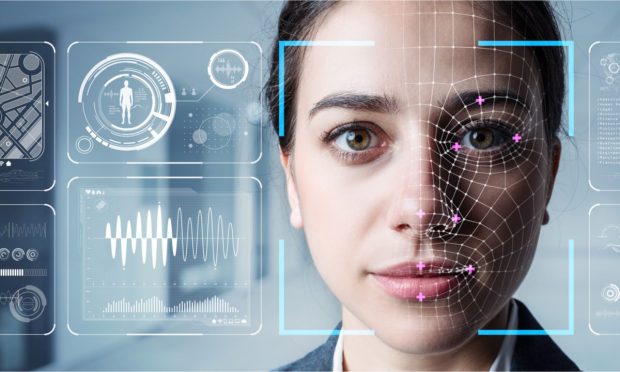Automated Boba Bar Startup Integrates Facial Recognition Payments to Build Loyalty Through Frictionless Convenience

The way consumers interact with restaurants, bars and cafes has been forever changed by the events of the last year and a half. Having adopted contactless technologies in response to contagion concerns, many have grown to expect the ease and convenience, as well as the safety, of new digital payment methods.
Some methods are only now beginning to appear in food service businesses. On Tuesday (Sept. 14), automated boba bar startup Bobacino announced a partnership with facial recognition payment company PopID to enable consumers to pay for their beverage with their faces.
“You can have that quick validation for repeat ordering and for payment in a secure and opt-in environment,” Darian Ahler, the boba bar’s CEO, told PYMNTS in an interview, “and you’re getting full confirmation, not only in the ordering process but then during pickup can also get that same validation and it’s kind of a closed loop, seamless experience, especially for people that are more concerned with contactless solutions.”
Other methods are already becoming the norm. Data from PYMNTS’ 2021 Restaurant Readiness Index, created in collaboration with Paytronix, find that 68% of all restaurants and 82% of top-performing restaurants now offer the ability to pay with digital wallets, and 28% of restaurants also offer the ability to pay with QR codes.
See also: NEW REPORT: QSRs’ Lagging Loyalty-Reward Investment Hurts Innovation And Sales
Whom It May Concern
Many consumers remain nervous at the prospect of paying by facial recognition, though Ahler describes this technology as “incredibly secure.”
“Every operator is trying to figure this out,” PopID CEO John Miller told Karen Webster in a 2020 conversation. “What are consumers willing to tolerate? How can we make people feel as safe as possible without tripping over their privacy limitations?”
A 2019 survey from the Nandu Personal Information Protection Research Center, a Chinese think tank, found that 80% of respondents were worried the use of facial recognition technology could put their personal information at risk, while 57% said they feared being tracked.
Read more: How A Piece Of Payments Tech Found A New Application In Restaurants’ Recovery
Chinese Consumers Slow To Adopt Pay By Face
Businesses have been trying to get facial recognition payments off the ground for over a decade, though the method has not taken off. Now, Ahler contends that advances in the technology itself and in the security of this technology will make the difference. Ultimately, he argues that the convenience will tip it over the edge.
“In some cases if you’re a repeat customer, it’ll say, ‘Hey … I saw you got the Matcha Matcha last time. Do you want that again?’” he explained. “It speeds up that ordering process, as well as … garnering that loyalty.”
Honey, I Shrunk the Restaurant
In a way, Bobacino’s robotic bubble tea kiosks, a cross between a typical, human-operated tea/coffee kiosk and a vending machine, are the logical next step following the rise of the ghost kitchen. If much of ghost kitchens’ advantage comes from their minimal footprint and their more efficient use of labor, the robotic kiosk, at least in theory, one-ups the ghost kitchen model in both categories.
Another advantage of ghost kitchens is that they offer a more capex-light way to try out new markets. As fast-casual chain Noodles & Company CFO Carl Lukach told PYMNTS, “What we’ll learn by going in a new market could be really eye-opening to say … how is the brand resonating with guests and how should we think about our real estate strategy when we actually put more dollars to work in opening up new markets?”
Related news: Noodles & Company CFO: Omnichannel Innovation Key To Restaurant Recovery
Ahler sees Bobacino’s machines serving a similar function, testing out markets in the middle of the United States in which consumers tend to be fairly unfamiliar with boba.
“If we have more of a mobile unit that costs considerably less, we can deploy it into places that are either not at all familiar or not very familiar with [boba], and start to test those markets pretty easily,” he said. “We’re able to explore new markets, with very low risk and high flexibility.”
Full Speed Ahead
Down the line, Bobacino’s vision is not only to have automated boba bars that the company operates, but also to license its technology to other operators looking for ways to reduce labor costs.
“We’re trying to really lower the barrier of entry for small business owners … and we’re doing that by supplying the pod,” Ahler said.
However, he also hinted at the company’s goal of “partnering with potentially larger corporations” to roll out its technology to franchisees at a larger scale.
In the more immediate future, the company’s goal is to open its first location in the first half of 2022 and to continue to raise funds to expand to additional locations.
“The hope is that [in a year] we’ll be talking about the raging success that our first unit has been,” Ahler said, “and we’ll be talking about how much people loved it. We’ll probably also be talking about some of the ways that people like that they didn’t, and how we plan to address those and expand when we start to scale our operations.”